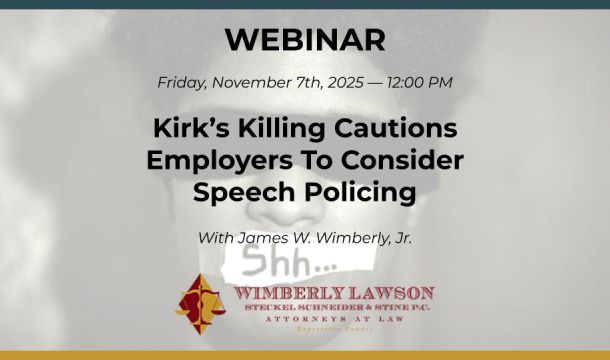A Warning About the WARN Act
The economic consequences of the COVID-19 pandemic have already been substantial, and they are not over by a long shot. Unfortunately, employers are starting to consider furloughs and layoffs as a way to minimize or cut their economic losses. Employers that are laying off workers or closing businesses must determine whether those events trigger notices required by the Worker Adjustment and Retraining Act (WARN).
The WARN Act requires employers to provide written notice at least 60 calendar days in advance of covered plant closings and mass layoffs. A WARN notice is required when a business with 100 or more full-time workers (not counting workers who have less than 6 months on the job and workers who work fewer than 20 hours per week) is laying off at least 50 people at a single site of employment, or employs 100 or more workers who work at least a combined 4,000 hours per week, and is a private for-profit business, private non-profit organization, or quasi-public entity separately organized from regular government.
WARN is triggered when a covered employer:
- Closes a facility or discontinues an operating unit permanently or temporarily, affecting at least 50 employees, not counting part-time workers, at a single site of employment. A plant closing also occurs when an employer closes an operating unit that has fewer than 50 workers but that closing also involves the layoff of enough other workers to make the total number of layoffs 50 or more;
- Lays off 500 or more workers (not counting part-time workers) at a single site of employment during a 30-day period; or lays off 50-499 workers (not counting part-time workers), and these layoffs constitute 33% of the employer’s total active workforce (not counting part-time workers) at the single site of employment;
- Announces a temporary layoff of less than 6 months that meets either of the two criteria above and then decides to extend the layoff for more than 6 months. If the extension occurs for reasons that were not reasonably foreseeable at the time the layoff was originally announced, notice need only be given when the need for the extension becomes known. Any other case is treated as if notice was required for the original layoff; or
- Reduces the hours of work for 50 or more workers by 50% or more for each month in any 6-month period. Thus, a plant closing or mass layoff need not be permanent to trigger WARN.
There are three exceptions to the WARN Notice requirement: faltering company, unforeseeable business circumstances, and natural disaster. It will be interesting to see if a pandemic could fall under either of the last two exceptions.
An employer who violates WARN is liable to each affected employee for an amount equal to back pay and benefits for the period of violation, up to 60 days. This liability may be reduced by any wages the employer pays over the notice period. WARN liability may also be reduced by any voluntary and unconditional payment not required by a legal obligation.
The Takeaway: If a business is considering any furloughs or layoffs, it should consult with experienced labor counsel to determine if the WARN Act notice requirement is triggered. Individual states may have their own requirements as well.

Kathleen J. Jennings is a former principal in the Atlanta office of Wimberly, Lawson, Steckel, Schneider, & Stine, P.C. She defends employers in employment matters, such as sexual harassment, discrimination, Wage and Hour, OSHA, restrictive covenants, and other employment litigation and provides training and counseling to employers in employment matters.
Related Content
Get Email Updates
Recent Content

Update of Work Authorization Immigration Status as of October 8, 2025

Workplace Investigations Largely Shut down, but Courts Remain Open during Shutdown for Now

Kirk’s Killing Cautions Employers To Consider Speech Policing

Trump Nominates Appointments to NLRB and EEOC but Policy Changes Likely to Be Delayed

DOL Launches Self-Audit Programs Designed to Help Employers Improve Compliance
